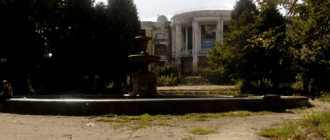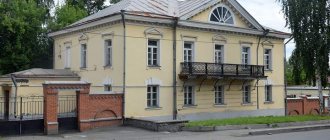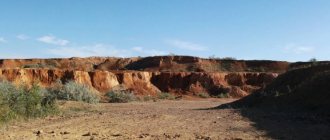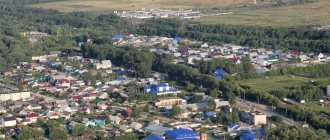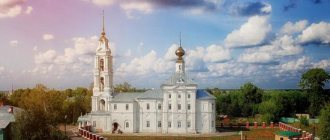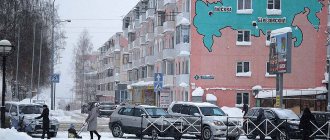Let’s start “walking” through the cities of our Tula region, and we’ll start with Kireevsk.
Why? I like this town, I have a special relationship with it, because in my time I often visited there, its streets awaken many pleasant memories in me. But this is all lyricism, but if it’s to the point, then... The town is small (according to the last census, about 20-odd thousand people were counted), 40 kilometers from Tula, quiet, sometimes it seems that it’s very quiet, although perhaps that’s me in such visited his corners more often. There are not many places for entertainment (but they exist, and, as they say, you can go, I have nothing to add here, because I have not visited any). More on this below, but now let’s look into the past.
Kireevsk: history of the city
So. The city of Kireevsk (Tula region) is still a very young town, of course, in comparison, but still. For clarity: the title of city was awarded only in the middle of the last (20th) century. Before that bright and significant moment, this place was called a workers’ village, and was called... Kireyevka. Perhaps this is where the affectionate and humorous nickname “Kirevka” came from.
If we look even further into the past, for example, to 1762, we will see only a village in these parts. Guess what name? That's right, Kireevskaya. So, at the turn of the 19th and 20th centuries, iron ore deposits were discovered on the territory of the present city, and naturally, intensive mining began, as a result of which the village began to grow rapidly until it reached the city, and the regional center.
Kireevsk: radiation zone, newspaper with 80 years of history and a factory of sofas and armchairs
We continue our journey through small towns in Russia. Today we will stop in Kireevsk, Tula region. After the accident at the Chernobyl nuclear power plant, he fell into a zone of radioactive contamination
. Are Kireyev residents afraid to live there and what else is it famous for outside its borders - Anna Tarubarova will tell you.
It’s like he’s taken from Prokudin-Gorsky’s photographs, in which peasant Russia was preserved. Kireyevsk is too good for a city with a Soviet mining and Chernobyl past - there were once mines here, but it is still part of the radioactive contamination zone. But this past is only hidden behind the May greenery. The editor-in-chief of the local newspaper, Natalya Podmoskovnikova, is convinced of this every time on her way to work.
Uncle Vitya complains about the roads and, as usual, blames the officials. Uncle Yura is in good health and scolds the local factory where stepladders and ironing boards are produced.
Yuri, resident of Kireevsk:
“My apricots burned this year! They either had a blowout or something else - the leaves on the trees turned yellow. And people who live in this area constantly complain of headaches. I have a friend, my comrade, who lives there, my wife and I worked together in the mine, that’s all - they don’t leave the hospital.”
In the next issue of Mayak, correspondent Konstantin Koryavtsev will talk about the dangers of tobacco: May 31 is No Smoking Day. He and Natalya create the regional newspaper together. 16 strips in color are published every week. In Soviet times, the name of the weekly sounded like a toast - “For ore near Moscow!” 83 years have passed since the first issue was published. The weekly is no longer a propaganda tool; freedom of speech has increased. The circulation decreased five times - to 3 thousand copies.
Natalya Podmoskovnikova, editor-in-chief of the newspaper
: “By the way, I tell many people - so they start to complain, I say: you understand, yes, we will highlight the problem, but we cannot say anything about whether it will be solved or not. We can consult with someone, a prosecutor, or ask a question to an official. But we cannot say how this will all be resolved in practice.”
Judging by the roads, Kireev officials do not read newspapers very carefully and rarely walk along city streets. We hoped to find good asphalt on Dorozhnikov Street, but in vain. This is the outskirts of the city. And even the local highway patrol service is completely off-road.
There is asphalt in the center - in the visibility zone of the frozen Ilyich. As if out of respect for the leader of the world revolution. But he would hardly be happy if he learned that the Tula region is in 21st position in the Russian road safety rating
. And the area of decent sidewalks in Kireevsk can be measured with a regular tape measure. The only place where there are tiles is the area near the cafe.
Ivan Sharunov is 27. Together with his friends, he organized the most fashionable place in the city, having previously destroyed the weeds in the area and lured his father, the chef of one of the Moscow restaurants, to join him.
Now, for 170 rubles, Kireev residents can enjoy a business lunch, like in a restaurant in the capital, and order dinner delivered to their home - something like this had never happened in the city before. Vanya invests all the profit - and it appeared only a year after the opening - into the business. He says: thanks to the programs for young entrepreneurs. A new family restaurant is just around the corner.
Ivan Sharunov, cafe owner:
“Many people said that this is not the place, not in Kireevsk, there is no need for a cafe. But I really wanted to. And they believed in themselves. Why not? Need to try! We tried it. Happened. I advise!
“This is the kind of cafe I designed at the end of the perestroika years,” Kireevsk resident Nikolai Petrovich shows the drawing.
Nikolai Petrovichev does not know Vanya. But just like a young businessman, he dreamed of making his hometown better. The house of culture, the train station, and monuments descended onto the streets of the city from his sketches. And how many social posters he wrote! After all, he was a senior graphic designer in Kireevsk.
“When I wrote these words - “the current generation will live under communism,” and here they crushed the miners’ chests, there was no bread and everything else, you understand?! Always holding a brush in my hand, drawing these words, I was always in doubt that this goal would be realized,” says Nikolai Petrovich.
But Nikolai Nikolaevich yearns for those times when in the mining town no expense was spared on street design. Now he cannot write - working with unsafe varnishes and paints has led to lung disease. The cafe he designed became an abandoned basement after being rebuilt.
The Kireevsk furniture factory has today replaced the mines - the city is now famous for its inexpensive sofas and armchairs. Trends – fashionable, anti-crisis. Previously, customers were offered four types of upholstery, but another one has appeared - zero. The cheapest.
Syria and China are helping to survive the crisis and not leave the country without upholstered furniture. Main fabric suppliers.
Igor Utkin, general director of the furniture factory:
“There are also Russian fabrics. For example, Ivanovo. But which will be an order of magnitude more expensive than the same China and the same Syria.”
Sofas and armchairs from here are distributed all over the country - to Sochi, Arkhangelsk, and Moscow. Soon they want to open a workshop for the production of cabinet furniture here. As soon as finances become easier. In the meantime, local factory owners are forced to go on vacation - now there are few orders, and wages are piecework.
The off-season at work is changed to the summer season. Despite environmental problems, residents of Kireevsk live in vegetable gardens, just like in Prokudin-Gorsky’s peasant Russia.
In total,
113 cities and villages are located in the radioactive contamination zone in the Kireyevsky district . The regional Ministry of Nature plans to exclude a third from this list. Research is currently underway. Before July 1, experts will collect soil samples that will show where there are no longer environmental problems.
Coat of arms of the city of Kireevsk
I can't get past the heraldry. The moment is important and very interesting.
“In a scarlet (red) field, on top of two picks, sharpened at both ends, crosswise with the handles up, a mace; all the figures are silver.”
Now we will decipher it, although, in general, everything is already extremely clear. But still. Kireyevsk was founded by the Cossacks, and their traditional symbol of power is the mace, so it was placed on the coat of arms. As for the picks, they symbolize the production of iron ore for the Tula factories.
The city of Kireevsk is located on the left bank of the Olen River. Distance from Tula - 42 km. Population - 25.4 thousand people. It is the administrative center of the Kireyevsky district of the Tula region. Local roads pass through the area, connecting Kireevsk with other regional centers of the region and Tula. There is also a railway line Vyazma - Syzran. Local roads connect Kireevsk with Tula, Bolokhovo, Lipki, and other regional centers of the region. Kireevsk is a young city, but the land of the Kireevsky district stores many interesting evidence of the past. There are 21 archaeological monuments, 14 historical, architectural and urban planning monuments. Among the most ancient settlements, the one located near the village of Satinki on the banks of the river has gained worldwide fame. Upa Satin settlement of the 6th century. BC. During the excavations, a lot of things for various purposes were found: tools, jewelry, which significantly expanded our knowledge about the life of ancient people of the early Iron Age. Kireevsk is the center of a single municipal entity “ Kireevsky District ”, which along with it includes the territories of two city administrations, four settlements and thirteen rural ones. On its territory there are 34 monuments of archaeology, history, architecture and urban planning. In 1928, the Kireyevsky mine was created and the industrial development and development of mining deposits began using the shaft, and later open-pit, method. Industrial, social and housing facilities are being built, the population of the village is growing, especially due to the arriving Ukrainians. In 1929, the plant named after. Dzerzhinsky launched two blast furnaces on Kosaya Gora, and a railway was laid to the Kireyevsky mine. By this time, six mines had been laid, but there was no electrical wiring or jackhammers to electrify them. The mine management sends the leader of the first five-year plan, Ignat Artemovich Chukhno, to Moscow to the People's Commissar of Heavy Industry of the USSR Sergo Ordzhonikidze. As a result of the trip, five thousand meters of electrical wiring and 24 jackhammers were obtained. On January 28, 1934, electric current came to the village, and 450 thousand tons of ore were sent to metallurgical plants. 13 million rubles were invested in the capital construction of mines, and 14 million 100 thousand rubles in housing construction. The village of Kireevsky grew and improved. In 1936, school No. 1 was built. But peaceful life was interrupted by the war. From November 7 to December 15, 1941, the village was temporarily occupied by fascist invaders. Many mines were flooded and burned, and workers fought on the fronts. The liberation of the area was not easy - 3,000 soldiers and officers died the death of the brave. Having healed the wounds caused by the war, in the post-war period the Kireevsky mine increased the rate of ore production. At the same time, the construction of coal mines was revived. The country was in dire need of fuel. Local pre-war mines designed for shallow coal mining - adits No. 7, 9 and others near Malevsky Forest - have exhausted their capabilities. By 1956, five modern mines were put into operation near the village of Kireyevsky. The construction of coal mines was also intensive in the city of Lipki. Thus, the then Dedilovsky district became one of the largest in the Moscow region for coal and iron ore mining. In 1956, the village of Kireevsky received the status of the city of Kireevsk and the regional center, and the Dedilovsky district was renamed Kireevsky . The territory of the city is 1071 hectares, the population is 28.7 thousand people. The 60s - 80s were marked by rapid socio-economic development and improvement of the city. Now Kireevsk is one of the largest industrial and cultural cities of the regional subordination of the Tula region. Dozens of enterprises, institutions and organizations of various forms of ownership operate in the city. The products of a number of enterprises are in great demand far beyond the boundaries of the district and region and are competitive in the market. These are faux fur, hosiery, products of the metal structures plant, Stroyindustriya JSC, milk and others. The city was significantly transformed due to the construction of the metal structures plant and the Vladimirovskaya mine. Phone code: +7 48754 City and district website: www.kireevsk.org
Photos of the city
What is Kireevsk like today? I was there not long ago, arrived in the morning, left in the evening, but what a pleasant moment it was for me. Actually, here are photos of Kireevsk taken at different times
Saturday, around 10 am, you are walking down the street, the sun is shining, it’s nice and... quiet. There are few passers-by, there are no cars scurrying back and forth, it’s easier to breathe. Maybe, on the contrary, it will seem sad to some, but everything is not so bad. So that you don’t get the impression that the town is dying out, I’ll note:
- They made roads there. Well, how they did it, they brought him into a divine form. Compared to what it was, it has become much better;
- We built all sorts of shopping centers and supermarkets;
- Residential buildings continue to be built. They are relocating people from dilapidated housing, I think this is definitely a plus.
